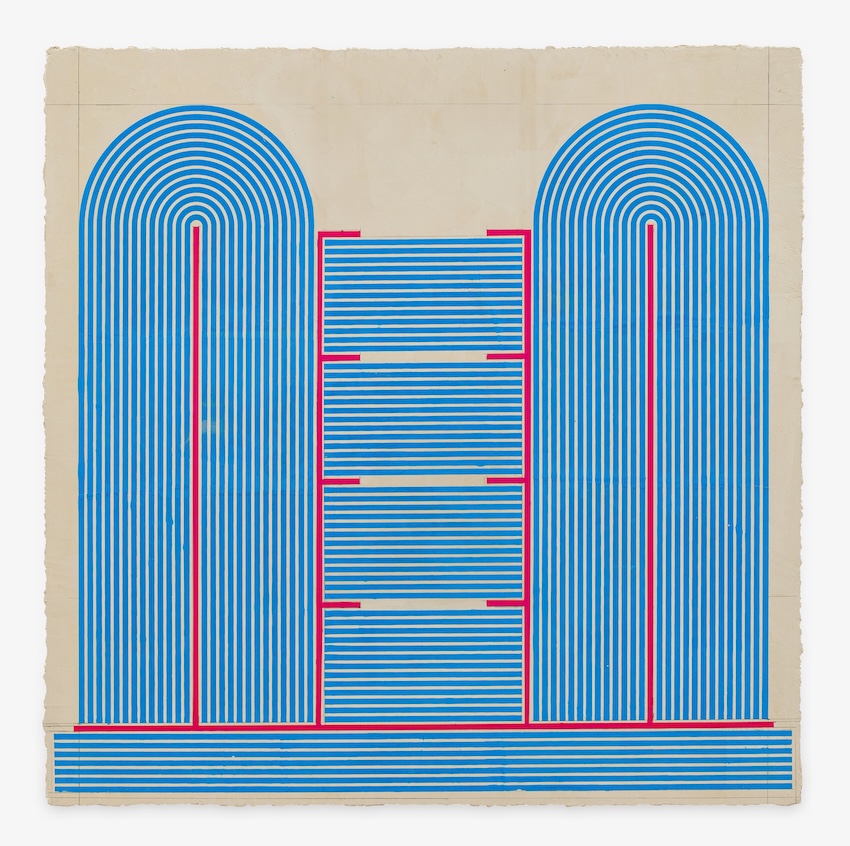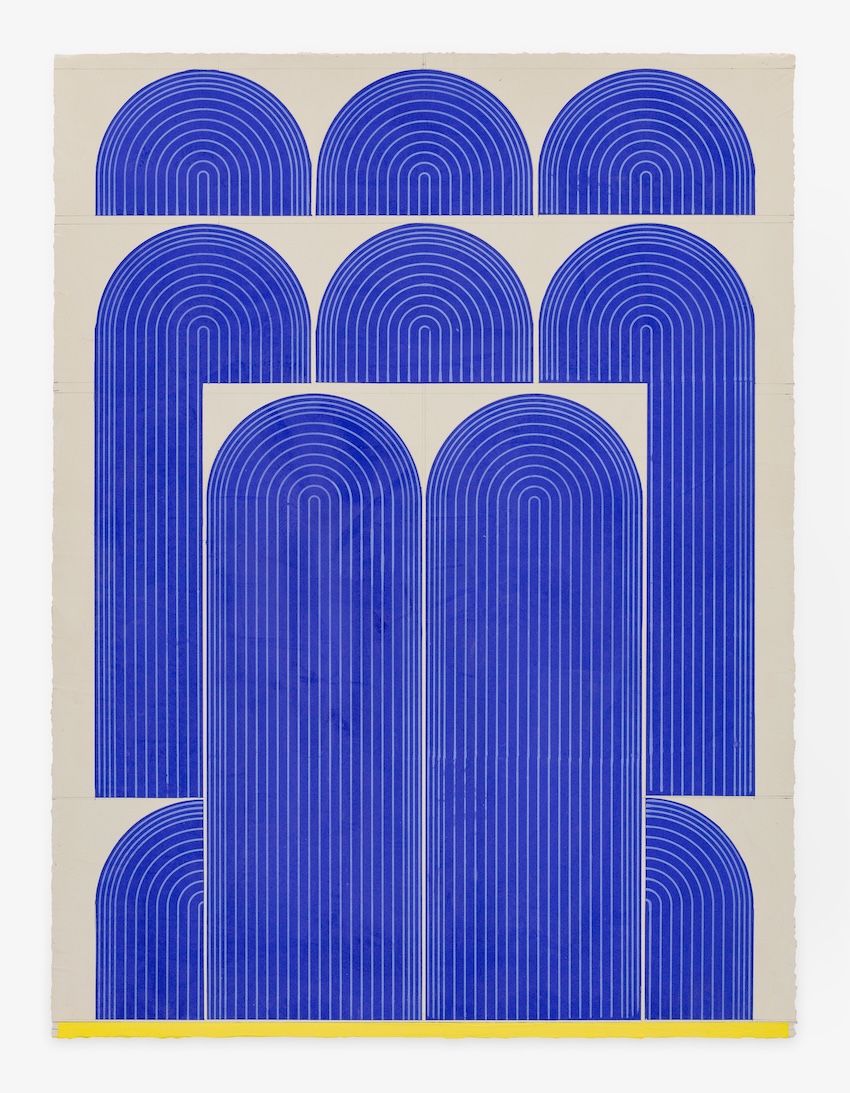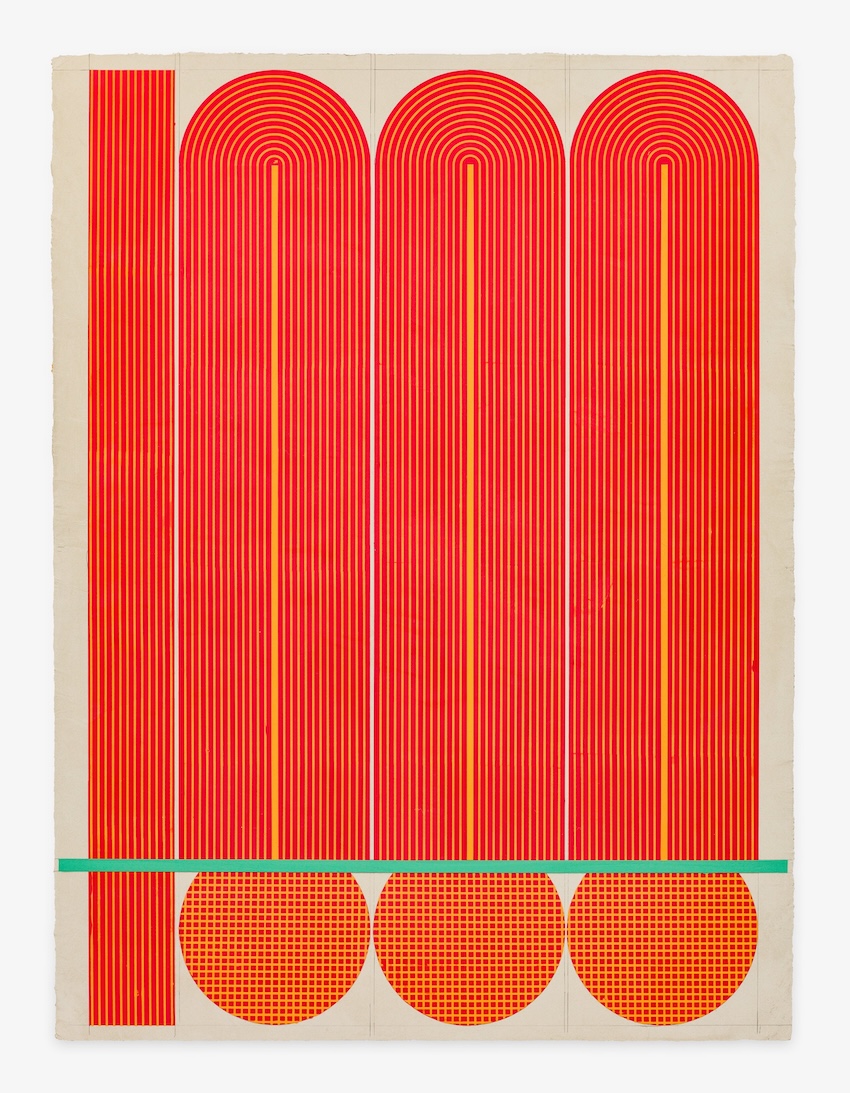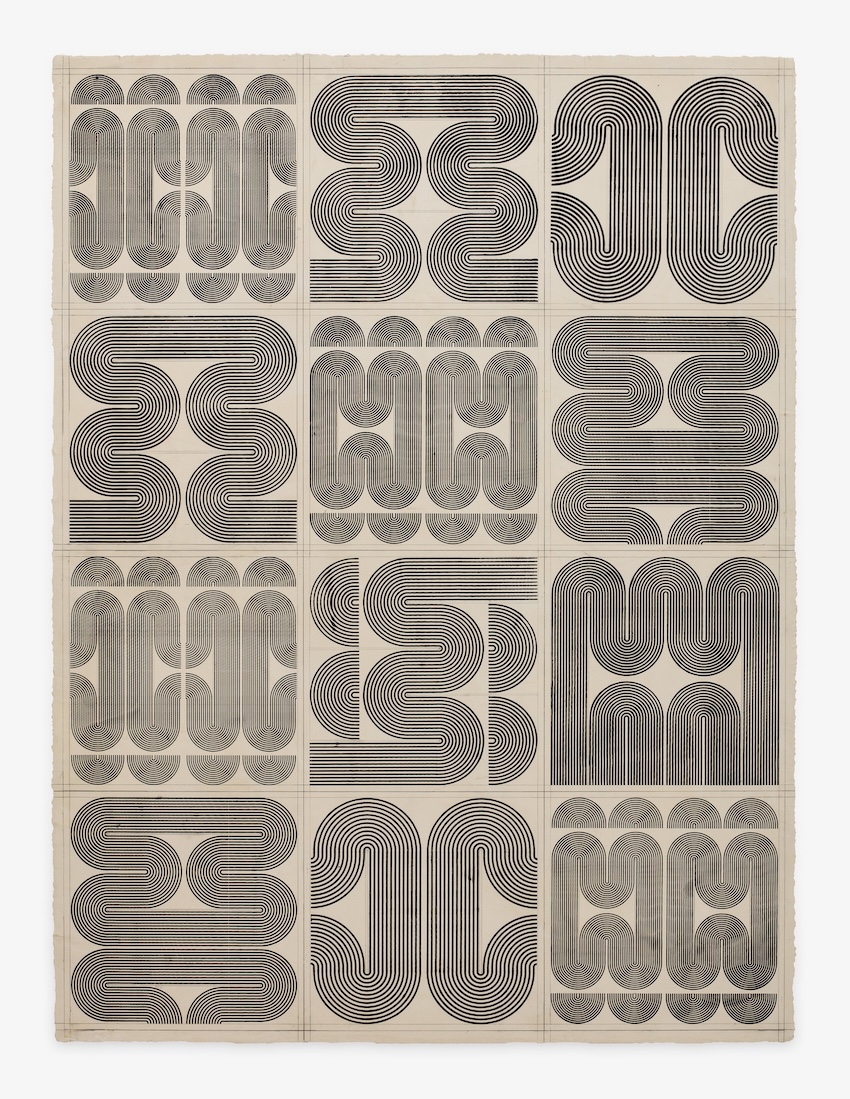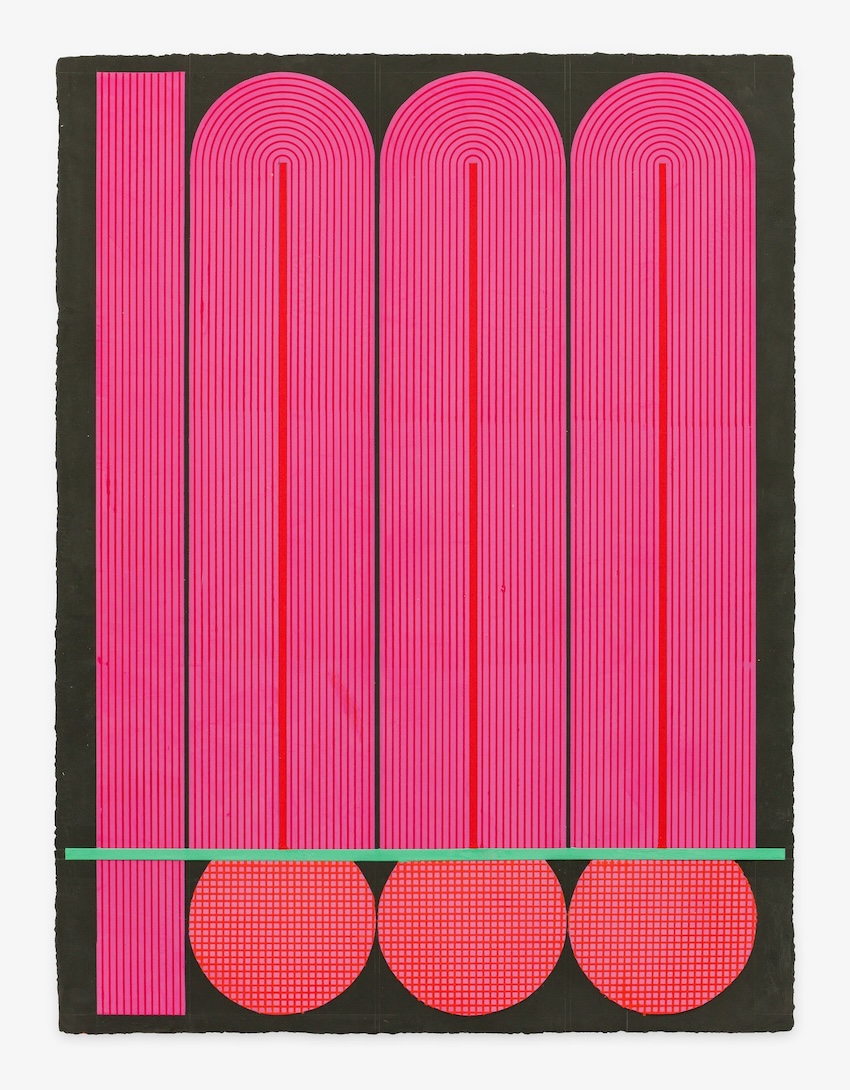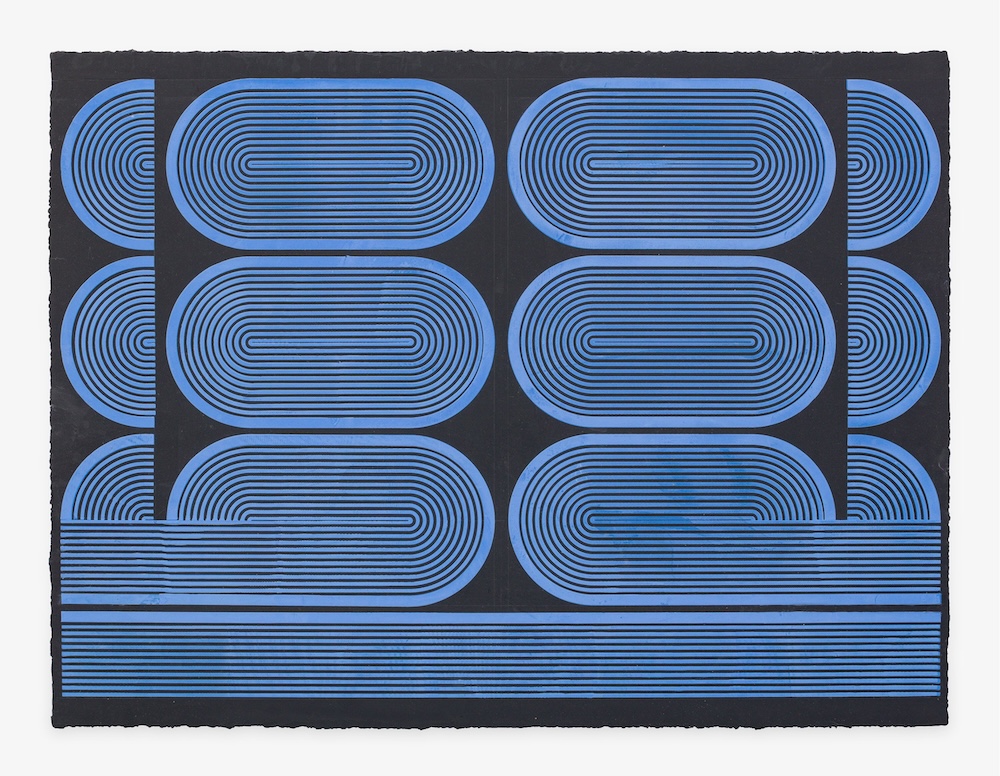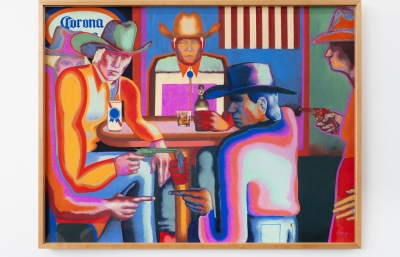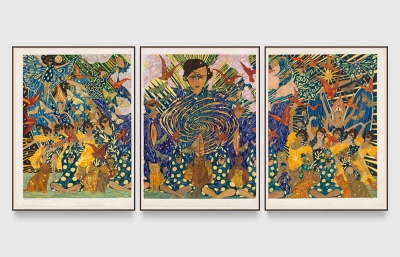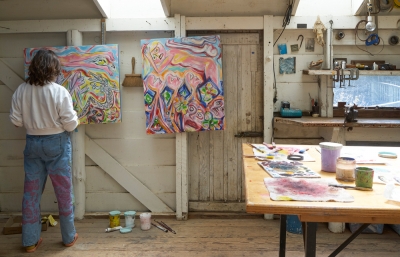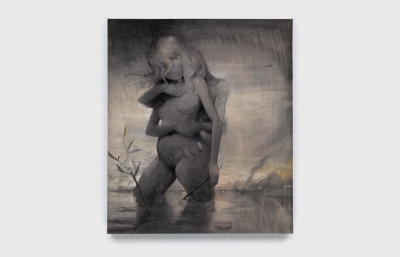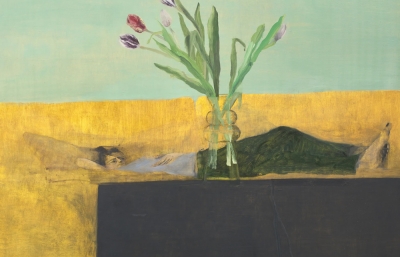Balancing precision with irregularity is the guiding principle in Elise Ferguson’s richly layered paintings. Her labor-intensive process begins with applying multiple rounds of pigmented Venetian plaster onto panels, which are then drawn over with imperfect guidelines in graphite to help register multiple rounds of silkscreened plaster in repeating geometric designs. Embracing this system's inevitable misalignments and uneven results imbues the works with unexpected texture, energy, and a palpable sense of touch. While the paintings initially appear exacting and machine-made, they quickly reveal a hand-hewn quality that animates and enlivens the surfaces.
Working within the language of abstraction, Elise Ferguson repeats and reconfigures modular forms like musical phrases that are paused, shifted, and subtly rearranged. Her compositions establish a rhythm, but one that welcomes dissonance and improvisation. Borders blur, pencil lines meander and smudge, and the crisp shapes she begins with eventually vibrate with motion and straying edges. The friction between optical clarity and material reality lends Ferguson’s work a quiet emotional charge and an unexpected resonance that borders on the spiritual.
Ferguson’s paintings relay a lifelong fascination with textiles and also highlight a deep appreciation of 19th-century Shaker designs. One drawing in particular, An Emblem of the Heavenly Sphere, by Polly Collins from 1854, directly inspired Ferguson’s painting, Shaker. The geometric symbolism and repetition in Collin’s work provided its maker a devotional fulfillment that Ferguson also channels in her practice. By bridging her undeniable desire for imperfection with mechanical clarity, a unique threshold is crossed that quietly highlights the artist’s unique vision and psyche.
https://www.shrine.nyc/elise-ferguson-threshold



